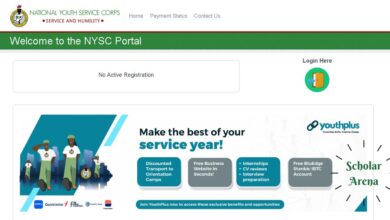How to Write a Letter to Admissions Office for College

So, you’ve decided to reach out to the admissions office. Whether you’re clarifying a point on your application, asking for additional information, or trying to make a strong impression, you might be wondering: how do you write a letter to the admissions office for college that actually makes a difference? Well, you’re in the right place.
Why Even Write to the Admissions Office?
Let’s be real for a second: colleges get thousands of applications every year. Standing out can feel like trying to catch the eye of someone in a crowded stadium. But here’s the good news—you’ve got this. Writing a letter to the admissions office can show initiative, clarify your application, or even address any concerns you might have. Think of it as your personal megaphone in a sea of whispers.
The Anatomy of an Impressive Letter
Now, before you dive into crafting your masterpiece, let’s break it down into digestible parts. Just like that 1,000-piece puzzle you started over the holidays (and maybe never finished), taking it step by step makes it a lot easier.
1. The Subject Line—Yes, It Matters
- Let’s start with something basic but crucial: the subject line. It’s the first thing they’ll see, and trust me, “Hey, got a sec?” isn’t going to cut it. Instead, try something clear and concise like:
- “Application Query: [Your Full Name]”
- “Clarification on Submitted Application: [Your Name & Application Number]”
- “Request for Additional Information Regarding Application: [Your Name]”
2. Greeting—Because We’re All Human
- Don’t just jump straight to the point. Address the person on the other end with a polite greeting. If you know their name (hint: do a little research), use it. If not, “Dear Admissions Committee” works just fine.
3. Introduction—Why Are You Here?
- This is where you answer the burning question: why are you writing this letter to the admissions office? Be straightforward. For example:
- “I am writing to inquire about my application status.”
- “I would like to provide additional context for my recent application submission.”
4. Body—The Meat of Your Letter
- Here’s where you dig into the details. This part needs to be clear, concise, and compelling. No one has time for a novella. Use bullet points or short paragraphs if necessary. Here are some examples:
- Clarifying Information: “I noticed that I may not have fully explained my involvement in [Activity]. Here’s some additional context…”
- Asking a Question: “Could you please provide more information on the [Scholarship/Program] I mentioned in my application?”
- Expressing Continued Interest: “I want to reiterate my strong interest in [University Name], particularly the [Specific Program].”
5. Conclusion—Wrap It Up with Style
- You’ve made your point, now close it off. Thank them for their time (seriously, they’re busy folks) and express your willingness to provide any additional information.
- “Thank you for considering my request. I am happy to provide any further details that may assist in the review of my application.”
- “I appreciate your time and consideration. Please do not hesitate to contact me if you require any more information.”
6. Signature—Sign Off Like a Pro
- Don’t just drop the mic and walk away. Sign off politely. “Sincerely” or “Best regards” work like a charm. Then, include your full name and contact information—just in case they want to reach out.
Pro Tips for a Stellar Letter
Now that you’ve got the structure down, let’s talk about those little extra touches that can take your letter from “meh” to “wow.”
- Keep It Short: Seriously, this isn’t the time to write your life story. Admissions officers are busy. Aim for a few concise paragraphs.
- Be Polite but Direct: You’re not writing to your best friend, but you’re also not writing to a robot. Be respectful, but don’t beat around the bush.
- Proofread Like Your Life Depends on It: Typos in a letter to the admissions office? Yikes. Proofread, then proofread again. Better yet, have someone else take a look.
- Follow Up—But Don’t Stalk: If you don’t hear back in a reasonable amount of time (say, two weeks), a polite follow-up is fine. But please, no daily emails.
A Few Words on What Not to Do
Let’s take a moment to cover some common pitfalls. Avoid these, and you’ll already be ahead of the pack.
- Don’t Be Demanding: “I expect to hear back by tomorrow.” Nope. Just, nope.
- Avoid Informality: This isn’t a text message. Keep your tone professional.
- No Fluff: “I have always dreamed of attending your prestigious institution…” Okay, unless this is directly relevant to your letter, skip the fluff.
A Quick Example for the Road
Let’s put it all together with a quick example. Say you want to clarify some information about your extracurricular activities:
Subject: Clarification on Submitted Application: [Your Name]
Dear Admissions Committee,
I hope this message finds you well. I am writing to provide additional context regarding the extracurricular activities section of my application. I realized that I may not have fully detailed my role as the president of the [Club Name], where I led a team of 15 students in organizing [Event/Project].
I would greatly appreciate it if this information could be added to my application file. Thank you for your time and consideration.
Best regards,
[Your Full Name]
[Your Contact Information]
And There You Have It
Crafting a letter to the admissions office might seem daunting at first, but with a little structure and a dash of personality, you can create something that not only communicates your message but also leaves a positive impression. Just remember, how you write a letter to the admissions office for college can be the difference between blending in and standing out. So take your time, be thoughtful, and most importantly—be yourself. Good luck!







